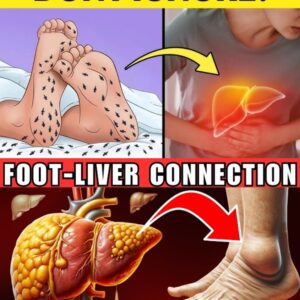Are your toes trying to tell you something? Toe warning signs for seniors might predict early mortality, a startling revelation gaining attention today, August 8, 2025. This article reveals six deadly clues—ranging from discoloration to numbness—that could signal serious health risks, empowering you to take action and share this vital knowledge with fellow seniors for a healthier community.

Understanding Toe Warning Signs for Seniors
Toe health often reflects overall well-being, especially in seniors. Poor circulation, a common issue with aging, can cause cold, discolored toes (e.g., blue or pale), linked to peripheral artery disease (PAD), which increases mortality risk by 50%, per a 2023 Circulation study. Infections or ulcers, especially in diabetic seniors, signal immune decline, while numbness might indicate nerve damage or stroke risk. These toe warning signs for seniors are subtle but critical, often overlooked until severe, making early monitoring essential.
Six Deadly Toe Warning Signs for Seniors
-
Discoloration: Blue or pale toes suggest poor blood flow, a PAD red flag.
-
Persistent Coldness: Chilly toes despite warmth may point to vascular issues.
-
Numbness or Tingling: This could signal nerve damage or early stroke risk.
-
Swelling: Unexplained swelling might indicate heart or kidney problems.
-
Open Sores: Non-healing ulcers, common in diabetes, suggest infection risk.
-
Thickened Toenails: Yellow or brittle nails may reflect fungal infections or circulation woes.
Consult a doctor if these persist, as timely intervention can prevent complications, unlike unverified health hacks online.
Why Monitoring Toe Warning Signs Matters
These signs connect to systemic conditions like diabetes, heart disease, or stroke, which account for 70% of senior mortality, per the CDC. Early detection through toe checks can prompt lifestyle changes or treatment, extending life expectancy. Sharing this with peers fosters a supportive network, much like community-driven health awareness campaigns, enhancing collective well-being.
Action Steps for Seniors
-
Daily Checks: Inspect toes for changes during morning routines.
-
Foot Care: Keep feet clean and moisturized to prevent sores.
-
Medical Advice: Seek a podiatrist or GP for persistent signs.
-
Healthy Habits: Walk 20 minutes daily to boost circulation, inspired by general wellness trends.
Encourage seniors to adopt these habits, turning toe monitoring into a life-saving routine. Toe warning signs for seniors are more than quirks—they’re potential life-savers. By recognizing these six clues and acting early, you can protect your health and inspire others. Share this wisdom today to build a healthier senior community.






